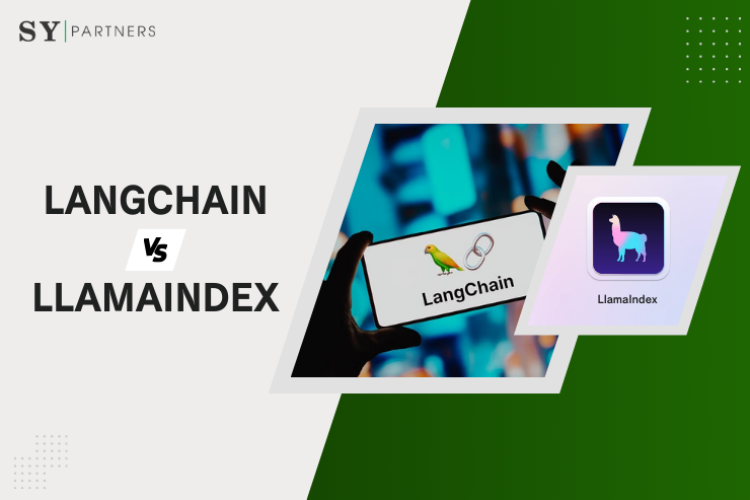ChatGPT and Microsoft Copilot: How to Choose the Best AI Tool for Business
In the modern business environment, leveraging AI tools is essential for improving operational efficiency, enhancing decision-making, and strengthening competitiveness. Choosing the right AI tool is a crucial decision that directly impacts cost reduction and productivity enhancement.
This article provides a comparison between OpenAI’s ChatGPT and Microsoft’s Copilot, detailing their features, business use cases, and pricing structures. It aims to provide concrete information to help select the most suitable AI tool for your organization’s needs. First, let’s look at the basic definitions of ChatGPT and Copilot.
1. What is ChatGPT?
ChatGPT is a conversational AI model developed by OpenAI, based on the GPT architecture. It excels in natural language processing and can handle a wide range of tasks including text generation, question answering, translation, and programming assistance.
In October 2024, a web search function was added, allowing real-time information retrieval. In business, it is used for automating customer support, content creation, and generating internal documents. Its strengths lie in natural conversational ability and versatility.
2. What is Microsoft Copilot?
Microsoft Copilot is an AI assistant developed by Microsoft, deeply integrated into the Microsoft ecosystem, including Microsoft 365 and Dynamics 365. It is based on OpenAI’s GPT model and leverages Microsoft Graph to access organizational data such as emails, documents, and meeting records, providing context-aware assistance.
For example, it automates document creation in Word or data analysis in Excel, improving operational efficiency. Copilot is designed with a focus on productivity improvement and enterprise data security.
3. Five Key Differences Between ChatGPT and Copilot
Both ChatGPT and Copilot are advanced generative AI tools, but they differ significantly in design philosophy and areas of expertise, which affects which approach is suitable for each use case.
Here, in addition to previous comparisons, we introduce five practical differences often overlooked in business applications.
| Item | ChatGPT | Microsoft Copilot |
|---|---|---|
| Context Awareness | Dialogues based on user input or search | Context understanding via Microsoft 365 data integration |
| Task Automation | Supports general-purpose generation, editing, and analysis | Automatically executes in-app actions in Excel/Word, etc. |
| Learning and Adaptability | Flexible adaptation via Custom GPT | Business optimization based on Microsoft Graph data |
| Visual Interaction | Image generation and visual analysis possible (DALL·E integration) | Specialized in visual suggestions in PowerPoint, etc. |
| Error Handling and Correction | Strong in real-time interactive corrections | Excellent at detecting and responding to in-app errors |
3.1 How Context Awareness Works and Its Accuracy
Copilot integrates with the Microsoft 365 ecosystem and can provide highly personalized responses based on user-specific information stored in Outlook, Teams, SharePoint, and more, such as calendars, past emails, and document content. For example, it can analyze past emails in Outlook and propose draft replies, offering support based on business context.
On the other hand, ChatGPT generates responses based on provided input and conversation history. While the latest version supports web search, it cannot fully grasp individual business contexts.
3.2 Scope and Depth of Task Automation
Copilot’s major strength is seamless automation within Microsoft 365 apps (Word, Excel, PowerPoint, etc.). For instance, it can automatically generate functions in Excel or propose slide structures and designs in PowerPoint, naturally integrating into daily workflows.
ChatGPT, by contrast, is not dependent on specific apps and handles a wide range of general-purpose tasks such as text generation, brainstorming, and programming code creation or review. However, in terms of “automatic execution” within apps, it does not match Copilot’s integration depth.
In global companies, using Copilot for routine task acceleration enhances productivity, while in Japanese companies, ChatGPT’s versatility is appreciated across business departments.
3.3 Learning and Customization Flexibility
ChatGPT can improve output accuracy based on user instructions and feedback. By using “Custom GPT,” it is possible to create AI assistants optimized for specific industries or tasks. Feeding it manuals or glossaries allows for responses tailored to unique corporate operations.
Copilot adapts based on Microsoft Graph data (schedules, documents, communication history) within the organization, but customization is limited to the Microsoft environment.
Therefore, startups and SMEs that prioritize flexibility often prefer ChatGPT, while large enterprises focusing on standardized workflows may find Copilot more suitable.
3.4 Visual Interaction and Image Generation Capabilities
ChatGPT integrates with DALL·E 3, allowing automatic image generation based on prompts or analyzing images to provide comments. For example, it can create advertising banner concepts on the spot or identify UI issues from screenshots, demonstrating strength in creative tasks.
Copilot can also suggest images and designs within PowerPoint or Word, but this visual support is confined to the app environment, such as automatically inserting illustrations according to slide layouts.
3.5 Error Handling and Feedback Functionality
ChatGPT allows real-time improvement of outputs through dialogue with users. For example, if generated code contains bugs, entering error information yields immediate correction suggestions. This is advantageous for developers or writers who work through trial and error.
Copilot excels at automatically detecting and suggesting fixes for errors occurring within Microsoft 365 (e.g., Excel function errors or PowerPoint layout mistakes). However, it lacks the flexibility of ChatGPT to immediately improve outputs based on interactive user feedback.
4. ChatGPT: Advantages and Disadvantages
ChatGPT, as a versatile and flexible generative AI, can handle various business tasks. However, integration with enterprise applications can present challenges.
Advantages
- Broad task coverage: Supports text generation, translation, code debugging, and more, covering diverse business needs on a single platform.
- Custom learning: Custom GPT enables solutions tailored to specific industries or operations.
- Independence: Can be used flexibly across various tools and environments without reliance on the Microsoft ecosystem.
Disadvantages
- Limited app integration: Does not support deep automated integration with enterprise apps like Microsoft 365.
- Limited organizational data context usage: Automatic reflection of internal files or meeting information is limited.
In summary, ChatGPT excels in broad applications but is less suited for close integration with specific enterprise applications.
5. Copilot: Advantages and Disadvantages
Copilot is a powerful tool for automating and streamlining daily tasks due to its close integration with Microsoft 365 apps. However, reliance on the Microsoft environment requires attention.
Advantages
- In-app automation: Smoothly automates tasks in Word, Excel, Teams, etc., using natural language.
- Utilization of organizational data: Microsoft Graph enables output reflecting business context from emails, files, schedules, etc.
- Consistent UX: Unified usability across Microsoft products, minimizing user confusion.
Disadvantages
- Ecosystem dependency: Limited utility outside Microsoft 365, with reduced functionality in other environments.
- Customization restrictions: Lacks flexible learning or operational optimization like ChatGPT, with lower versatility.
Copilot is highly effective for organizations using Microsoft products routinely but shows limitations in flexibility for unique workflows or non-Microsoft environments.
6. Three Key Business Uses for ChatGPT
ChatGPT’s natural conversational ability and high customizability make it suitable for flexible business applications across industries and departments. Here are three notable use cases:\
6.1 Automating Customer and Internal Responses Across Platforms
ChatGPT integrates with chat tools such as Slack, LINE, and Microsoft Teams, naturally fitting into daily workflows. This automates customer support and internal knowledge responses, reducing human resource burden.
For example, a Japanese retail company integrated ChatGPT into LINE to handle customer inquiries outside business hours or during busy periods, achieving both improved customer satisfaction and efficient support operations.
6.2 Accelerating Creative Work Through Idea Generation
ChatGPT excels as a brainstorming partner, generating ideas for new product concepts, advertising copy, or internal campaign planning.
For example, a global advertising agency used ChatGPT during the initial brainstorming phase, generating concept proposals in multiple languages including Japanese and English, greatly expanding the speed and scope of idea development.
6.3 Enhancing Training and Education Through Custom Training
ChatGPT can automatically generate educational content customized to industry or business needs. Trainers focus on design, while learners receive easy-to-understand materials.
A Japanese medical institution used ChatGPT to create original e-learning materials for healthcare workers, allowing rapid and flexible updates for specialized topics such as infection control and patient handling manuals.
7. Three Key Business Uses for Copilot
Copilot’s deep integration with Microsoft 365 allows AI functions to be used directly within everyday apps, which is its greatest feature. Here are three major applications for operational efficiency:
7.1 Optimizing Office Work for Time Savings and Focus Improvement
Copilot integrates with Outlook and Teams to summarize emails, propose replies, and generate meeting minutes automatically, reducing routine tasks.
For example, a Japanese consulting firm used Copilot to automate project team email processing and meeting record-keeping, allowing specialists to focus on high-value tasks such as analysis and proposals.
7.2 Supporting Decision-Making Through Data Visualization
Copilot in Excel allows aggregation, trend analysis, and charting via natural language commands. Non-specialists can perform advanced analysis easily.
A global manufacturing company used Copilot to organize daily production data, visualize bottlenecks and anomalies per process, enabling real-time decision-making for on-site leaders.
7.3 Accelerating Proposal Work Through Presentation Automation
Copilot integrated with PowerPoint can automatically propose structure and design for meeting or sales materials. Entering keywords or requirements results in complete draft presentations within minutes, greatly reducing preparation time.
In a Japanese marketing department, Copilot enabled the creation of high-quality client proposals quickly with a small team, increasing both the frequency and accuracy of proposals.
8. Pricing
8.1 ChatGPT Pricing
| Plan Name | Price | Main Features |
|---|---|---|
| Free | $0 | Basic use, model limitations |
| Plus | $20/month | Fast responses, peak priority, GPT‑4o available |
| Pro | $200/month | Unlimited access, advanced features, research support |
| Team | $30/month per user (annual $25) | Team features included |
| Enterprise | Consultation required | Large-scale/business use, custom quote |
ChatGPT offers flexible pricing for individual light users to large-scale corporate deployment. Paid plans are especially useful for GPT‑4o usage or API integration.
8.2 Microsoft Copilot Pricing
| Plan Name | Monthly Price (US) | Main Features/Use |
|---|---|---|
| Standard Copilot (Free) | $0 | Basic AI functions at web/OS level, image generation, latest model |
| Copilot Pro | $20 | High-performance model, priority response, Office integration at home |
| Microsoft 365 Copilot | $30/user | Integrated AI for business, full 365 app support, security-focused |
| Copilot Studio | ~$200 | Custom agents/models development, advanced enterprise version |
Microsoft Copilot is a business-focused AI deeply integrated with Microsoft 365, excelling in daily task efficiency. While the $30 monthly fee is relatively high, it is worthwhile for companies using multiple apps across the ecosystem.
Summary
ChatGPT offers high versatility and excels in customization and integration with other tools, making it flexible for creative tasks and diverse business scenarios.
Microsoft Copilot, deeply integrated into Microsoft 365, is ideal for companies prioritizing operational efficiency and security. Choosing the right tool according to business operations and IT environment supports DX promotion and productivity improvement.
Frequently Asked Questions
Q1. What is the biggest difference between ChatGPT and Microsoft Copilot?
The biggest difference lies in how each tool handles context—specifically, which data it can access and how it uses that data. Copilot can access corporate data within Microsoft 365, including emails, documents, calendars, and Teams conversations. Based on this data, it can perform tasks like document creation, meeting summary generation, and Excel formula generation directly within the apps.
On the other hand, ChatGPT can flexibly generate text, code, images, and more based on user input, but it does not integrate with organization-specific business data. Therefore, Copilot is positioned as a business support AI deeply embedded in the existing Microsoft environment, while ChatGPT is a general-purpose generative AI suited for external system integration and creative generation.
Q2. Which is more suitable for small and medium-sized enterprises (SMEs), ChatGPT or Copilot?
For SMEs, the practical approach is to consider both the “business systems you use” and the “breadth of intended use.” If your organization already uses Microsoft 365 and relies on Word, Excel, and Outlook as core tools, Copilot is an easy choice because the learning curve is low and adoption is straightforward.
Conversely, if you want to use AI broadly for creative planning, idea generation, customer response, FAQ creation, or manual preparation, ChatGPT is more suitable.
In particular, by using Custom GPT, you can build business-specific AI that incorporates your company’s unique terminology and industry knowledge. The deciding factor is less about the tool’s raw capabilities and more about which business workflows you want to integrate AI into.
Q3. Can ChatGPT perform business support like Microsoft 365?
By itself, ChatGPT cannot automatically access internal data such as documents or calendars like Microsoft 365 can.
However, it is possible to integrate ChatGPT into workflows using APIs or tools like Zapier, Make (formerly Integromat), or Slack. Additionally, the ChatGPT Team/Enterprise plans allow multiple users to share and operate the same Custom GPT in a secure environment, making it possible to create an internal AI agent integrated with your knowledge base.
Note, though, that ChatGPT does not provide “native integration” like Microsoft products, so some system design skills are required to implement it effectively.
Q4. Can Copilot generate images or be used creatively?
Copilot is primarily focused on automating and optimizing business tasks, so its image generation capabilities are limited. It can suggest icons or layouts that fit PowerPoint slides and provide visual support for presentation materials, but it does not support generating images from scratch like ChatGPT + DALL·E.
If your team prioritizes creativity for web design, advertising, branding, or UX design, ChatGPT is the better choice. Conversely, for daily work centered on documents in PowerPoint or Excel, Copilot’s support is highly effective.


 EN
EN JP
JP KR
KR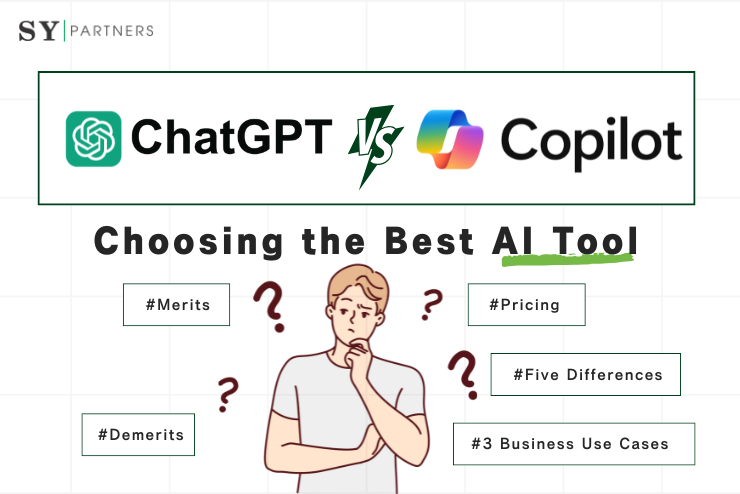


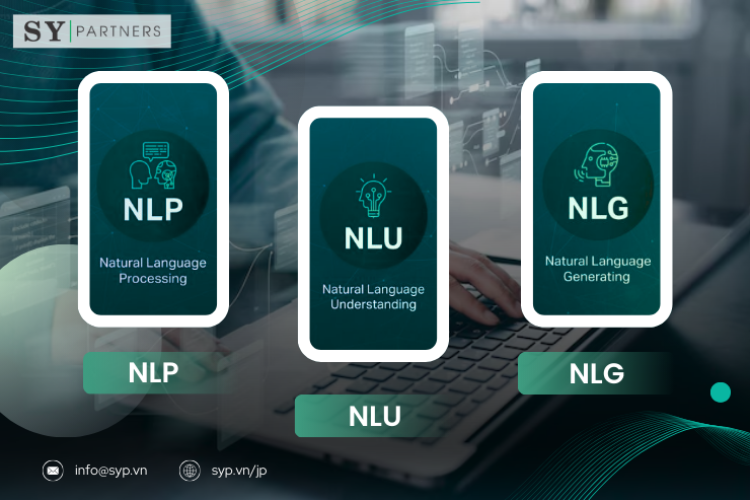

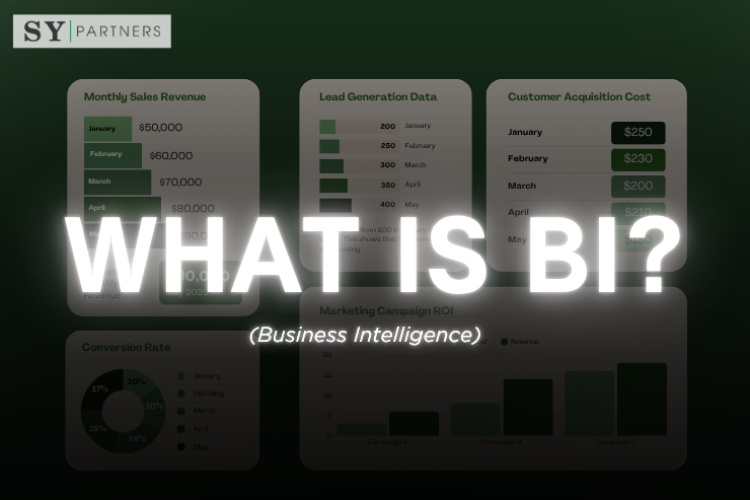
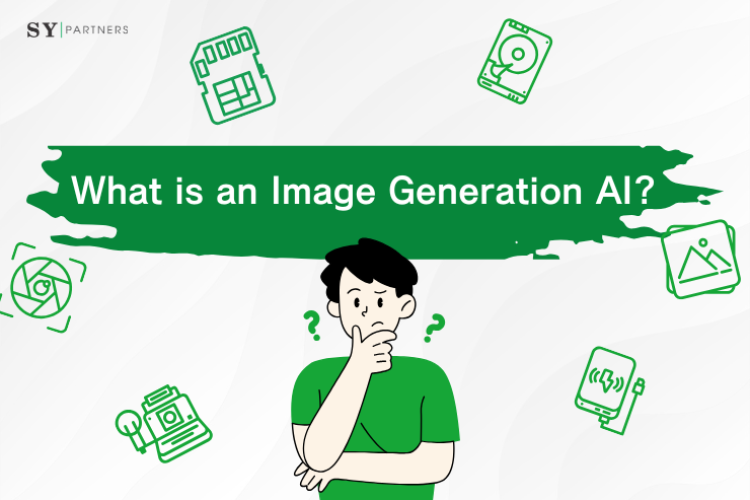

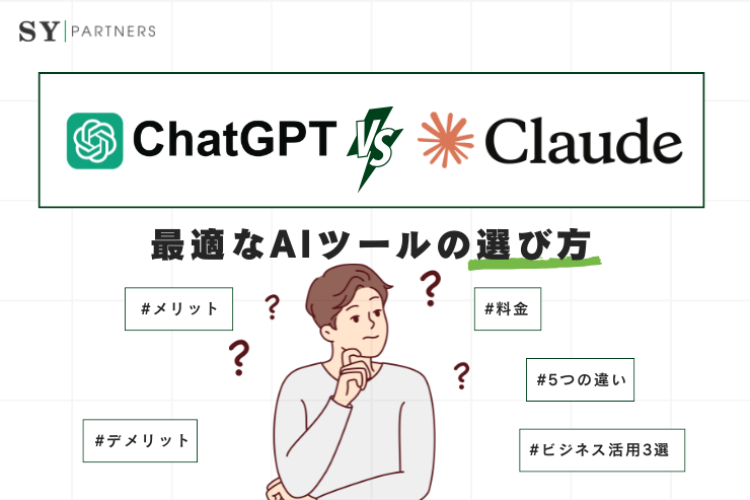
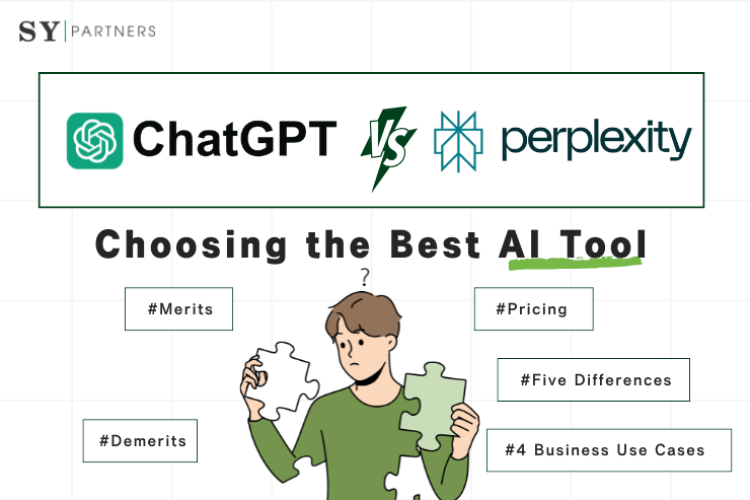
![[For Enterprises] Adoption Rate of Microsoft Copilot and 8 Key Business Use Cases](/sites/default/files/styles/medium/public/articles/%5BFor%20Enterprises%5D%20Copilot%20%E2%80%94%20Corporate%20Adoption%20Rate%20and%208%20Business%20Use%20Cases.png?itok=6MVSPst9)
![[For Enterprises] Grok — Corporate Adoption Rate and 8 Business Use Cases](/sites/default/files/styles/medium/public/articles/%5BFor%20Enterprises%5D%20Grok%20%E2%80%94%20Corporate%20Adoption%20Rate%20and%208%20Business%20Use%20Cases%20%281%29.png?itok=3Vu1lBCh)
![[For Enterprises] Claude — Corporate Adoption Rate and 8 Business Use Cases](/sites/default/files/styles/medium/public/articles/%5BFor%20Enterprises%5D%20Claude%20%E2%80%94%20Corporate%20Adoption%20Rate%20and%208%20Business%20Use%20Cases.png?itok=tc2aEIEt)
